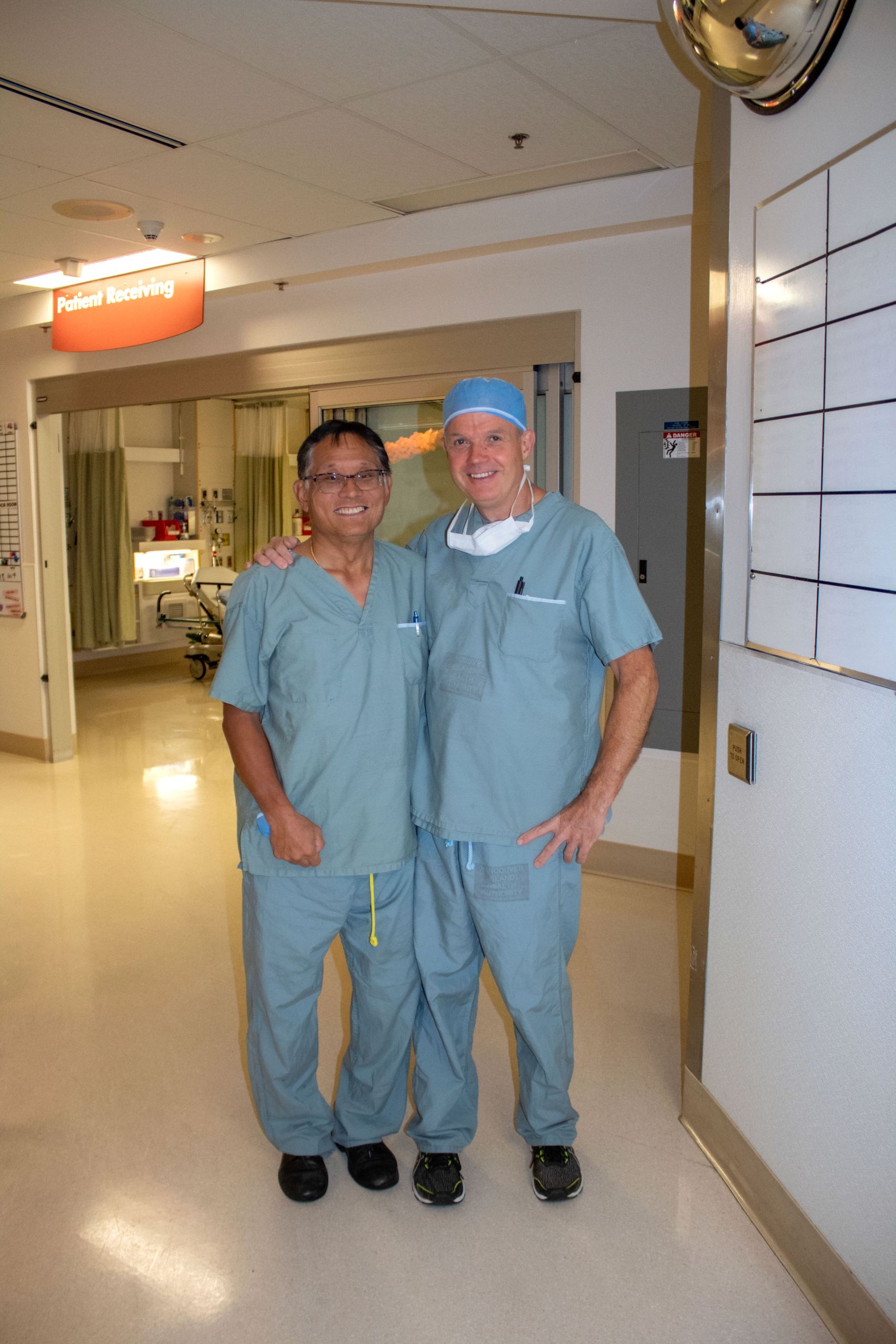
I have been a Urologist in Victoria for over 25 years. During this time, I have had the immense privilege of having many roles, not the least of which is to be the conduit between a donor and a patient. When I hold a surgical instrument in my hand ahead of a procedure, I frequently take a moment to appreciate that a donor’s gift has made this possible.
When I learned of the Foundation’s latest focus on imaging, I immediately thought about the direct impact this would have on our work—not only for my colleagues in surgery and myself, but for my colleagues across our hospitals.
It is unfathomable to me as a surgeon to care for my patients without the latest in imaging technology.
James Anglin is a patient I introduced to the Foundation to share just how pivotal CT imaging can be in someone’s life. I met James in 2017 when a CT scan revealed urothelial carcinoma—more commonly known as bladder cancer. We used a special CT test called a CT Urogram that demonstrated a 2cm mass in the lining of James’ bladder. This tumor was removed by a transurethral resection—an endoscopic procedure conducted in the operating room. The procedure was successful.
That original CT scan was examined by a radiologist—they’re the ones who notified me of the probability of bladder cancer. The report read: pancreas appears normal. Two years later, I ordered another CT scan for James who was experiencing pain in his side—changes noted in the pancreas are worrisome for the development of a malignancy, the report stated. While the CT scan revealed a clean bill of health for the bladder and kidneys—my area of expertise—the changes to the pancreas had to be evaluated by specialists.
My colleague in care, Dr. Alison Ross, is a general and hepatobiliary surgeon. After referrals and further imaging, she performed a laparoscopic minimally invasive surgery to remove the tumour in James’ pancreas. Effectively, James was cured of pancreatic cancer because of the procedure and the imaging that guided it—with a chemotherapy treatment provided to cover the bases.
James’ journey doesn’t stop there. Bladder cancer tends to reappear, and we keep a close eye on our patients. In the Cystoscopy Clinic at Royal Jubilee, we perform over 5,000 annual cystoscopies (scopes of the urinary system), doing the test on about 125 patients every week. The CT Scanner plays a vital role for each of these patients, including James.

New imaging technology for our Victoria hospitals that serve our entire Island population—may it be MRI machines, or a CT scanner—allows us to raise the standard of care. The newest CT scanner has the ability to capture very fine details, to the tune of 0.6 millimetres, meaning we can find and address tumours earlier on.
I see Foundation donors as partners in healthcare—our best champions. I am grateful for your generosity, and the impact you make each and every day by providing us with the tools we need to provide life-changing and life-saving care. Thank you for responding to our needs.
—Dr. Iain McAuley, MD
Urologist, Royal Jubilee Hospital and Foundation donor





